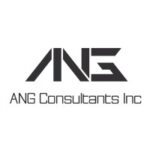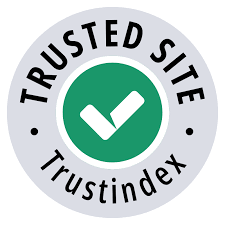Strategic Transformation
Accredited Consulting Service for Mr. Savage Accredited Senior Consultant (ASC)

The Appleton Greene Accredited Consultant Service (ACS) for Strategic Transformation is provided by Mr. Savage and provides clients with four cost-effective and time-effective professional consultant solutions, enabling clients to engage professional support over a sustainable period of time, while being able to manage consultancy costs within a clearly defined monthly budget. All service contracts are for a fixed period of 12 months and are renewable annually by mutual agreement. Services can be upgraded at any time, subject to individual client requirements and consulting service availability. If you would like to place an order for the Appleton Greene Strategic Transformation service, please click on either the Bronze, Silver, Gold, or Platinum service boxes below in order to access the respective application forms. If you have any questions or would like further information about this service, please CLICK HERE. A detailed information guide for this service is provided below and you can access this guide by scrolling down and clicking on the tabs beneath the service order application forms.
Client Telephone Conference (CTC)
If you have any questions or if you would like to arrange a Client Telephone Conference (CTC) to discuss this particular Unique Consulting Service Proposition (UCSP) in more detail, please CLICK HERE.
Bronze Client Service
Monthly cost: USD $1,500.00
Time limit: 5 hours per month
Contract period: 12 months
SERVICE FEATURES
Bronze service includes:
01. Email support
02. Telephone support
03. Questions & answers
04. Professional advice
05. Communication management
To apply – CLICK HERE

Silver Client Service
Monthly cost: USD $3,000.00
Time limit: 10 hours per month
Contract period: 12 months
SERVICE FEATURES
Bronze service plus
01. Research analysis
02. Management analysis
03. Performance analysis
04. Business process analysis
05. Training analysis
To apply – CLICK HERE
Gold Client Service
Monthly cost: USD $4,500.00
Time limit: 15 hours per month
Contract period: 12 months
SERVICE FEATURES
Bronze/Silver service plus
01. Management interviews
02. Evaluation and assessment
03. Performance improvement
04. Business process improvement
05. Management training
To apply – CLICK HERE
Consultant Profile
In today’s rapidly shifting global landscape, organizations face constant pressure to evolve—but few can do so with clarity, confidence, and sustained impact. Mr. Savage provides Strategic Transformation services that guide leaders through complexity to overcome resistance and unlock their organization’s full potential. His core offering blends change leadership, strategic advisory, operational transformation, capital access, and global expansion into a unified approach that delivers tangible outcomes. Whether navigating disruption, entering new markets, scaling operations, or restructuring for growth, Mr. Savage helps clients align leadership, accelerate execution, and maintain momentum.
The central problem Mr. Savage solves is the persistent gap between intention and implementation. Many organizations understand the need for change, yet struggle to execute due to fragmented leadership, internal resistance, or untapped capital. He addresses these challenges by designing tailored transformation frameworks that align people, processes, and funding toward a clear strategic direction. What makes his approach distinct is the ability to move seamlessly between big-picture strategy and on-the-ground execution. Mr. Savage brings the insight, discretion, and professionalism of enterprise-level consulting—paired with the agility and responsiveness of a boutique advisor. His work is always hands-on, relationship-driven, and focused on creating a lasting impact. With deep experience across industries—especially banking, energy, agriculture, manufacturing, and consulting—he collaborates with boards, executives, and operational teams to embed clarity, unlock capital pathways, and ensure transformation isn’t just launched, but fully realized and brought to market. In a world of accelerating change and growing complexity, organizations need more than advice—they need trusted, strategic partners who can help them move from vision to value. Whether preparing for growth or overcoming barriers that have stalled progress, Mr. Savage is your strategic partner for a world of change.
To request further information about Mr. Savage through Appleton Greene, please CLICK HERE
Executive Summary
Strategic Transformation
Strategic Transformation is a high-impact consulting service focused on the core service objectives of strategic clarity, organizational alignment, transformation design, capital alignment, and execution and sustainability. Through Strategic Transformation, the goal is to help organizations navigate complexity, unlock growth opportunities, and implement change that delivers measurable and sustainable value.
At the heart of an organization’s Strategic Transformation is a commitment to implementing recommendations and embedding new integrated strategies that solve real-world business challenges. Whether an organization is scaling operations, entering new markets, restructuring for efficiency, or accessing capital, end-to-end advisory services that align leadership, strategy, and execution bring about organizational transformation and change.
Strategic Transformation services are outcome-focused, ensuring that engagements lead to clear results: accelerated growth, improved operational performance, increased access to capital, stronger governance, and a roadmap for long-term market performance and validity. Clients benefit from this consulting service to combine strategic foresight with practical implementation—moving initiatives from planning to execution without loss of momentum or clarity.
Strategic Transformation delivers the precision of enterprise-level consulting with the agility and responsiveness of a boutique advisory approach. This model ensures that each engagement is relationship-driven, context-specific, and deeply actionable—built around the real dynamics, goals, and constraints of the organization.
The process is collaborative by design, aligning closely with executives, boards, and key stakeholders to identify structural barriers, co-create targeted solutions, and execute transformation strategies with discipline and momentum. It accelerates decision-making, sharpens strategic focus, and ensures that leadership alignment translates into operational follow-through. Across sectors such as financial services, energy, manufacturing, agriculture, and professional consultancy, Strategic Transformation is trusted for its ability to bring clarity to complexity and deliver measurable value in fast-moving and competitive environments.
The ultimate benefit is clear: organizations gain a trusted strategic partner capable of turning ambition into action and complexity into opportunity. With a sharp focus on outcomes, the service empowers clients to lead with confidence, scale with precision, and achieve lasting, enterprise-wide impact—wherever they operate in the world.
Service Methodology
Strategic Transformation is the core service offering designed to help organizations move from strategic intent to enduring impact. It addresses the persistent gap between vision and execution by delivering a unified method that integrates clarity, design, alignment, and delivery.
The methodology begins with Strategic Clarity—a discovery and diagnostic phase that surfaces core challenges, defines priorities, and reframes complexity into clear direction. Through data-driven insight and leadership engagement, this phase ensures that the strategy is not only sound, but actionable.
Next is Organizational Alignment, where stakeholder interests, leadership dynamics, and internal capabilities are evaluated and brought into cohesion. This step removes friction by aligning people, systems, and culture behind a shared transformation agenda.
The third phase focuses on Transformation Design. Tailored frameworks are developed to support structural and operational change, grounded in measurable goals. These are not off-the-shelf models, but bespoke strategies that respond to context, risk, and readiness—covering governance, decision-making, processes, and performance levers.
Capital Alignment is then introduced, ensuring the financial backbone of the transformation is secure. This includes identifying internal and external capital pathways, optimizing funding strategies, and aligning investment with priorities to reduce friction and unlock execution.
Finally, the service is delivered through a cohesive Execution and Sustainability phase. Implementation support includes ongoing advisory, capability building, change leadership, and performance tracking—ensuring transformation isn’t just launched, but fully embedded and sustained.
This holistic methodology is designed to equip organizations with the clarity, capacity, and confidence to lead transformative change that lasts—across industries, markets, and leadership transitions.
Implementation is supported end-to-end, with an emphasis on leadership alignment, capability building, and long-term value realization.
Service Options
Companies can elect whether they just require Appleton Greene for advice and support with the Bronze Client Service, for research and performance analysis with the Silver Client Service, for facilitating departmental workshops with the Gold Client Service, or for complete process planning, development, implementation, management and review, with the Platinum Client Service. Ultimately, there is a service to suit every situation and every budget and clients can elect to either upgrade or downgrade from one service to another as and when required, providing complete flexibility in order to ensure that the right level of support is available over a sustainable period of time, enabling the organization to compensate for any prescriptive or emergent changes relating to: Customer Service; E-business; Finance; Globalization; Human Resources; Information Technology; Legal; Management; Marketing; or Production.
Service Mission
The mission behind Strategic Transformation is to help organizations move beyond short-term fixes and toward enduring, high-impact change. In an environment marked by volatility, evolving markets, and constant disruption, Mr. Savage enables leaders to respond with clarity, cohesion, and strategic intent.
Strategic Transformation is not a one-size-fits-all solution. It is a rigorous, tailored process designed to align vision with execution, leadership with culture, and ambition with capability. Mr. Savage’s mission is to ensure that organizations don’t just plan for the future — they’re structurally and strategically equipped to lead it.
This offering brings together strategy, operational design, capital access, and change leadership into one integrated service. Mr. Savage works closely with executive teams, C-suite leadership, boards, and decision-makers to unearth barriers, unlock internal alignment, and design custom transformation pathways. His goal is to instill a forward-thinking posture across the organization — ensuring every move is intentional, every investment is strategic, and every transformation is sustainable.
At the heart of Mr. Savage’s mission is the belief that meaningful change only occurs when it is rooted in shared purpose and executed with discipline. Strategic Transformation is not about abstract roadmaps — it is about pragmatic solutions that are as actionable as they are visionary.
Whether guiding an enterprise through restructuring, expansion, digital evolution, or capital alignment, Mr. Savage’s ambition is clear: to help clients realize transformation that is not only implemented but embedded — built to last, adapt, and lead. Strategic Transformation, as he delivers it, is a commitment to moving organizations forward with strength, speed, and resilience.
Service Objectives

- Strategic Clarity
Strategic Transformation begins with clarity of purpose. The objective is to define a focused, actionable direction that aligns leadership, motivates teams, and guides enterprise-wide decisions. Without this foundation, even the most well-funded transformation efforts risk fragmentation, inertia, or misalignment. Strategic Clarity addresses this risk by creating a shared understanding of where the organization is today, where it aims to go, and how it plans to get there. This process begins with a structured discovery phase. It includes in-depth leadership interviews, stakeholder engagement, internal diagnostic assessments, and external market analysis—covering positioning, competitive dynamics, and sector trends. These inputs help uncover underlying tensions, conflicting priorities, and emerging opportunities that may otherwise remain hidden in day-to-day operations. The insights gathered are then synthesized into a cohesive strategic narrative—one that not only articulates long-term vision but also provides a roadmap for short-term decisions and actionable steps. By applying proven facilitation frameworks and strategic mapping tools, leadership teams are more able to distill complex issues into a manageable set of priorities and choices. This gives organizations the confidence to act decisively, with alignment across functions and leadership levels. Strategic Clarity is more than a mission statement or a set of goals—it is the anchor for transformation. It shapes the organization’s identity, focuses its resources, and strengthens its ability to adapt. When organizations move forward with a unified purpose, they’re better equipped to navigate uncertainty, accelerate change, and lead with conviction. This objective ensures that transformation is not reactive but deliberate—built on insight, driven by intent, and sustained by leadership. - Organizational Alignment
Strategic transformation cannot succeed without internal cohesion. Organizational Alignment focuses on building the leadership unity, cultural readiness, and shared accountability needed to translate strategy into action. It ensures that all stakeholders—across functions, departments, and hierarchy—are moving in the same direction, with clarity on their role in delivering change. This objective begins with a deep diagnostic of internal dynamics. Through facilitated interviews, readiness assessments, leadership mapping, and business modeling canvases, areas of alignment and misalignment are identified—surfacing tensions, communication breakdowns, or structural bottlenecks that may hinder progress. Both formal systems (such as governance and reporting) and informal dynamics (such as culture, influence, and trust) are evaluated to create a holistic view of the organization’s ability to support transformation. Using structured alignment workshops and proven change management frameworks, strategic consensus amongst executive teams is realized—clarifying roles, refining decision-making processes, and establishing leadership behaviours that reinforce the vision. In order to sustain momentum, it is vital to define who is responsible for what, how teams will collaborate, and what support systems are needed. This creates a strong leadership spine that can drive change with confidence and consistency. Organizational Alignment doesn’t stop at the top. Internal engagement strategies that cascade vision and responsibility throughout the organization are vital to overall success. These include change ambassador models, department-level planning sessions, and ongoing feedback loops to maintain alignment over time. Every team member understands not only what the strategy is, but why it matters—and how they can contribute to it. By embedding alignment into both structure and culture, this objective ensures transformation is not just announced but activated. The result is an organization that is united in direction, clear in responsibility, and resilient in the face of change, an essential foundation for realizing sustained strategic impact. - Transformation Design
Transformation Design is where strategic intent becomes operational reality. This service objective focuses on translating high-level goals into a practical, actionable roadmap—complete with defined initiatives, timelines, governance, and success metrics. It ensures your organization’s strategy doesn’t remain conceptual, but evolves into a structured journey that delivers measurable impact. Every transformation is unique. To better assist this transformation, developing a customized transformation architecture that reflects your organization’s strategic priorities, operating model, and internal capacity for change is crucial. This design phase breaks down broad ambitions into clearly defined workstreams, each sequenced to build momentum and achieve proof of progress early and often. Interdependencies, resource needs, and critical success factors are identified—so that each phase supports and accelerates the next. A robust governance framework is embedded into the design. This includes steering committees, workstream leadership structures, and performance management systems that keep execution on course. Clear reporting rhythms, accountability mechanisms, and escalation pathways are established that allow your leadership to respond to challenges in real time—without derailing progress. Transformation Design also integrates change agility. Every roadmap includes feedback loops, iteration checkpoints, and contingency planning to help your organization remain responsive in dynamic environments. Risk is not avoided—it is anticipated, monitored, and managed as part of the execution strategy. At its core, this objective delivers a bridge between vision and implementation: a pragmatic, phased, and actionable blueprint that empowers your teams to act with confidence and clarity. With the right design in place, transformation becomes not only possible—but sustainable and scalable. - Capital Alignment
Capital Alignment ensures that your transformation strategy is financially viable, scalable, and sustainably funded. Without the right capital in place, even the most well-conceived plans can stall. This service objective is designed to align your strategic ambitions with the financial resources necessary to bring them to life—efficiently, intelligently, and at the right scale. The Capital Alignment approach begins with a comprehensive assessment of your strategic initiatives and the capital required to fund them across each phase of execution. This includes identifying both immediate and future financial needs, mapping existing resources, and uncovering funding gaps. From there, the optimal mix of capital is more easily determined—from internal reinvestment and asset optimization to external sources such as institutional investors, private equity, venture capital, impact financing, or strategic partnerships. More than just sourcing capital, this service focuses on capital strategy. This phase helps structure funding in ways that minimize risk, preserve flexibility, and support long-term growth. This includes refining your investment narrative, developing robust financial models, and ensuring that your organization is “capital-ready” with the right governance, compliance, and reporting protocols in place. Each organization’s unique context, growth stage, and sector dynamics shape how capital is pursued and deployed. Whether your priority is to accelerate market entry, scale operations, restructure debt, or invest in innovation, having your capital architecture tailored to your strategy brings cohesion and continuity—not the other way around. With the right financial structure in place, transformation becomes more than a possibility—it becomes a competitive advantage. Capital Alignment empowers leaders to make bold, forward-looking decisions, knowing they have the financial runway and flexibility to execute with confidence. - Execution & Sustainability
Execution & Sustainability ensures that strategic transformation moves beyond planning into decisive action—while building the internal capabilities needed to sustain and scale results over time. This service objective supports clients in closing the gap between vision and delivery. Structured implementation support, combining program oversight, tactical leadership, and adaptive performance management are provided and aligned to your organization’s overall strategy. Whether guiding a major transformation or a sequence of strategic initiatives, this helps define operating cadences, resolve real-time challenges, and keep stakeholders focused on measurable outcomes. The Execution & Sustainability phase of engagement goes beyond managing workstreams—it’s about building momentum and rapport, a key component of successful strategic transformation. Structured execution frameworks are embedded, clear accountability pathways are established, and cross-functional coordination to prevent misalignment or inertia is facilitated. Executive teams are supported through coaching, advisory check-ins, and on-demand leadership partnership to ensure decisions are made quickly, coherently, and in alignment with the transformation roadmap. But successful execution is not enough unless it’s repeatable and resilient. That’s why this service objective is focused equally on building internal capability. This includes designing systems, training key personnel, and transferring knowledge so that your team can carry the transformation forward—independently and confidently. For overall project success, it is vital to implement feedback loops, performance check-in reports, and change reinforcement mechanisms to help your organization learn and adapt in real time. Ultimately, Execution & Sustainability is about embedding transformation into your organizational DNA. This ensures that change is not a one-time event but a continuous capability—built on clarity, ownership, and strategic discipline. By the end of our engagement, clients are not just implementing strategy—they’re equipped to lead it, evolve it, and sustain its impact well into the future.
Testimonials
Chartered Professional Accountant
“Mr. Savage is absolutely amazing. He addresses any matter in very quick order and never lets anything slip through the cracks. He is knowledgeable and is always acting in our best interest. We cannot say enough good things about him.” — Managing Director of a Chartered Professional Accountants Firm
A quotation taken from a client reference within the Accounting industry.
Fashion Retailer
“Mr. Savage is a consummate professional and has taken every business challenge put in front of him in stride. We have been so proud to work together.” — Vice President at a Global Fashion Retailer
A quotation taken from a client reference within the Retail industry.
Engineering Services
“Mr. Savage has been helping me for a while remotely. He is great in his role. He answers my email enquiries very quickly and efficiently. If you need anything, I recommend contacting Mr. Savage.” — Chief Executive at an Engineering Services Firm
A quotation taken from a client reference within the Engineering industry.
Financial Services
“Mr. Savage is driven by purpose. Working with Mr. Savage over the past year, he has demonstrated great patience in delivering an exceptional customer experience while building our brand. He clearly has extensive knowledge from their current and past experiences.” — Group Head in the Financial Service Sector
A quotation taken from a client reference within the Finance industry.
Restaurant & Hospitality
“Thank you so much for your excellent customer service. Mr. Savage has always been great to me. Thank you for your timeliness and dedication.” — Restaurant & Hospitality Business Owner
A quotation taken from a client reference within the Hospitality industry.
More detailed achievements, references and testimonials are confidentially available to clients upon request.
Industries
This service is primarily available to the following industry sectors:
Banking & Financial Services
The Canadian banking industry plays a vital role in the country’s economic landscape, providing a comprehensive range of financial services to both retail and commercial clients. Dominated by six major institutions—Royal Bank of Canada, Toronto-Dominion Bank, Scotiabank, Canadian Imperial Bank of Commerce, Bank of Montreal, and National Bank of Canada—the sector is characterized by stability, robust regulatory oversight, and expansive reach. These institutions deliver a suite of core offerings including deposit accounts, personal and commercial lending, mortgages, foreign exchange transactions, and investment advisory services.
Over the past five years, the industry has experienced strong growth, with a compound annual growth rate (CAGR) of 13.9%, positioning expected revenue at $490.5 billion in 2025. Residential mortgages and business loans remain the industry’s most significant product lines, reflecting ongoing demand for real estate financing and capital for business expansion. Contributing approximately $158 billion annually to Canada’s GDP—representing 3.5% of the national total—the financial services sector is the sixth-largest industry in the country and employs nearly 300,000 Canadians.
Key macroeconomic conditions, including the post-pandemic decline in inflation and the Bank of Canada’s interest rate management, continue to shape consumer and business borrowing behaviour. The sector’s performance is closely tied to monetary policy, with the Bank of Canada’s prime rate setting the tone for lending activity nationwide.
Emerging trends are redefining the competitive landscape. Banks are accelerating digital transformation initiatives, particularly through artificial intelligence and data-driven platforms. Strategic mergers and acquisitions, along with inorganic growth tactics, are enabling large institutions to scale rapidly and diversify their offerings. However, the sector faces ongoing pressure from low-cost digital entrants and evolving regulatory frameworks.
Looking ahead, Canada’s banking industry is poised for continued expansion, underpinned by market consolidation, technological modernization, and evolving customer expectations. As financial institutions pursue greater efficiency and client-centricity, the ability to adapt swiftly and strategically will be key to sustaining momentum in a shifting economic environment.

Energy
The energy sector remains a cornerstone of Canada’s economy, encompassing a broad range of industries including oil and gas extraction, mining, quarrying, and an increasingly dynamic renewable energy segment. As the third-largest contributor to national GDP, the sector generated approximately $160 billion in economic output in 2023 and directly employs around 290,000 Canadians. Canada’s position as one of the world’s top producers of crude oil and natural gas—ranking fourth globally in proven oil reserves—continues to solidify its strategic role in global energy supply chains.
Major firms such as Enbridge, Canadian Natural Resources, TC Energy Corporation, Suncor Energy, and Cenovus Energy dominate the oil and gas space, while Nutrien, Barrick Mining, and Teck Resources are among the country’s largest mining and quarrying companies. The sector holds nearly $1 trillion in assets and generated $196 billion in energy exports in 2024, trading with over 150 countries worldwide. Canada’s stable macroeconomic and political conditions offer an appealing environment for energy operations, although evolving regulatory frameworks and environmental considerations have tempered foreign investment and delayed several large-scale projects in recent years.
Despite these headwinds, Canada’s energy industry is poised for transformation. The sector is increasingly shaped by global trade policies, geopolitical tensions, and fluctuating foreign exchange rates. In response, companies are innovating and diversifying their portfolios. Emerging trends include the development of biofuels, liquefied natural gas (LNG), hydrogen technologies, and carbon capture and storage (CCS)—all of which align with Canada’s broader transition to a low-carbon economy and its climate commitments.
Looking ahead, the Canadian energy sector will need to strike a balance between traditional resource development and the advancement of renewable and sustainable alternatives. This period of transition represents both a challenge and an opportunity for industry players, policymakers, and investors alike.
With its deep resource base, technical expertise, and resilient infrastructure, Canada remains well-positioned to lead in the next era of global energy transformation.

Agriculture
Canada’s agriculture sector is a vital pillar of the national economy and a global benchmark for quality, innovation, and sustainability. Encompassing farms, fisheries, and ranches, the sector produces a wide range of goods—from crops and livestock to feed, fibre, and fuel—through the systematic cultivation of plants and animals. In 2023, primary agriculture contributed $31.7 billion to Canada’s GDP, representing 1.4% of the total economy, and directly employed approximately 250,000 individuals.
Canada’s agribusiness industry is globally recognized for its clean production practices, diverse food offerings, and commitment to sustainable development. The country consistently ranks at the top of the Global Food Security Index, reflecting excellence in food quality, safety, and accessibility. It is also the world’s leading exporter of canola and pulses, with primary export markets including the United States, China, and Japan. Major players such as Cargill, Viterra, Syngenta, Richardson International, Mastronardi Produce, and HyLife play pivotal roles in advancing production, trade, and innovation across the country.
Emerging technologies are transforming the agricultural landscape. Innovations such as plant-based protein development, autonomous tractors, GPS-guided precision agriculture, and AI-driven herbicide application systems are driving efficiencies while reducing waste. These advances are also contributing to a consolidation trend in the industry, where technological scale is enabling larger, more productive farming operations. Canadian agritech is rapidly becoming a key sector for investment and economic development, positioning the country as a destination of choice for international businesses seeking growth in food and agricultural technology.
As global demand for sustainable, secure, and high-quality food sources continues to rise, Canada is poised to capitalize on its strengths. With its vast arable land, advanced infrastructure, strong regulatory frameworks, and focus on innovation, the Canadian agriculture sector is well-positioned to expand its global influence and economic contribution in the years ahead.
Manufacturing
The manufacturing sector is a cornerstone of Canada’s economy, defined by the physical and chemical transformation of raw materials into finished products across a broad spectrum of industries. As the second-largest contributor to national GDP, manufacturing added approximately $211 billion in 2024, accounting for over 10% of Canada’s total economic output. It also plays a vital role in international trade, with exports of manufactured goods totaling approximately $466 billion, reflecting steady growth over the past five years.
Canada’s top export destinations for manufactured products include the United States, China, Japan, Mexico, and the European Union, with export values increasing by 9.4% from the previous period. The sector’s strength is regionally anchored in Ontario, Québec, and Alberta, which together represent the majority of Canada’s manufacturing GDP. These provinces benefit from mature industrial ecosystems, highly skilled labour forces, and well-integrated transportation and logistics infrastructure.
The five largest industries driving Canadian manufacturing are transportation equipment, food production, chemical manufacturing, fabricated metal products, and machinery manufacturing. These industries not only generate significant economic value, but also support complex supply chains and employment across the country.
Opportunities for transformation and growth in Canadian manufacturing are being shaped by technological advancement and global demand for sustainability. Automation and robotics are increasingly being adopted to improve efficiency, lower costs, and maintain competitiveness. There is growing investment in sustainable and adaptive manufacturing, driven by both environmental considerations and shifting consumer expectations. Additionally, strategic partnerships, particularly cross-border and interprovincial collaborations, are emerging as a key mechanism for innovation and market expansion.
With its reputation for quality, reliability, and compliance, Canada is well-positioned to thrive in a rapidly evolving global manufacturing landscape. Continued investment in innovation, workforce development, and smart manufacturing will be essential for sustaining growth, improving resilience, and securing Canada’s role as a global leader in advanced manufacturing.
Consultancy
The consulting sector in Canada plays a pivotal role in enhancing business performance and guiding organizations through complex decision-making and operational challenges. With services spanning strategic, financial, technological, and environmental domains, management consultants serve as critical partners in advancing innovation, improving efficiency, and navigating regulatory or economic change. As of 2025, the consulting industry in Canada is estimated to generate $26 billion in revenue, reflecting a compound annual growth rate (CAGR) of 2.3% over the past five years.
Approximately 80,000 consulting firms operate nationwide, employing around 155,000 professionals. This ecosystem ranges from boutique advisory firms to national firms such as Accenture, KPMG, McKinsey & Company, and Boston Consulting Group. While large players typically focus on high-level strategy and global scalability, smaller firms deliver agile, specialized expertise in sectors such as human resources, information technology, science and economics, environmental policy, and management consulting.
The rise in ESG (Environmental, Social, and Governance) adoption has been a recent driver of growth, prompting a surge in demand for consultants with expertise in sustainability and regulatory compliance. In parallel, strong macroeconomic conditions have provided greater fiscal flexibility for clients across industries, leading to increased investment in long-term strategy development, digital transformation, and financial optimization.
The provinces of Ontario, British Columbia, Alberta, and Québec account for the majority of consulting sector revenues, due to their dense economic activity and concentration of head offices and innovation hubs. Business clients represent the dominant market segment, with consultancy services often embedded into critical projects ranging from corporate restructuring to market entry strategy and risk management.
With Canada’s economy forecasted for stable growth in the coming years, the consulting sector is expected to see continued demand for high-value advisory services. Firms that can combine cross-disciplinary expertise with localized insight will be best positioned to lead clients through complexity, offering a blend of tactical execution and strategic foresight in a fast-evolving business environment.
The provinces of Ontario, British Columbia, Alberta, and Québec account for the majority of consulting sector revenues, due to their dense economic activity and concentration of head offices and innovation hubs. Business clients represent the dominant market segment, with consultancy services often embedded into critical projects ranging from corporate restructuring to market entry strategy and risk management.
With Canada’s economy forecasted for stable growth in the coming years, the consulting sector is expected to see continued demand for high-value advisory services. Firms that can combine cross-disciplinary expertise with localized insight will be best positioned to lead clients through complexity, offering a blend of tactical execution and strategic foresight in a fast-evolving business environment.
Locations
This service is primarily available within the following locations:

Calgary, Canada
Calgary is Canada’s third-largest city by population, home to over 1.6 million people and spanning 825 square kilometers. Located in Alberta, Calgary consistently ranks among the world’s most liveable cities—placed fifth globally by the Economist Intelligence Unit in 2024. It is a central business hub in Western Canada, hosting the highest concentration of corporate headquarters in the country and serving as the base for major firms including Cenovus Energy, Canadian Pacific Kansas City, and WestJet.
The city’s economy is anchored by energy, financial services, transportation and logistics, and creative industries. Calgary is also recognized for its vibrant entrepreneurial ecosystem, where small businesses account for more than 95% of all enterprises. Alberta’s favourable tax environment—featuring the lowest corporate tax rate in Canada at 23%, and just 11% for small businesses—supports business growth and innovation. This makes Calgary an attractive location for startups and established firms alike.
Despite global geopolitical tensions and moderate domestic economic expansion, Calgary remains resilient. While investment activity may be influenced by external pressures such as currency exchange fluctuations, policy constraints, and inflationary trends, Calgary’s economic performance is expected to surpass both Alberta’s and Canada’s overall growth in 2025.
Labour market conditions remain mixed, with an average unemployment rate of 6.75% and a prime business loan rate of 5.9% over the past four years. However, significant economic opportunities are emerging in sectors such as aerospace, agribusiness, sustainable energy, and the creative economy.
Calgary’s ability to attract capital, talent, and industry innovation positions it as a strategic urban centre not only for national progress but also for global competitiveness. For organizations seeking growth in a future-facing, opportunity-rich environment, Calgary remains a leading Canadian gateway.

Los Angeles, United States
Los Angeles, the most populous city in California, is a global metropolis with a 2024 population of 3.87 million and a surrounding metropolitan area that houses nearly 13 million people. Positioned on the Pacific Coast in Southern California, Los Angeles is an influential economic and cultural centre, widely recognized for its leadership across entertainment, international trade, business, media, and technology. With a 2023 real GDP of approximately $1.08 trillion USD, the Los Angeles metropolitan region is the third-largest in the world, behind New York and Tokyo, by nominal GDP and ranks as the 20th largest global economy on its own.
The city’s economic engine is rooted in its dynamic service sector, with significant output also coming from financial services, real estate, and industrial sectors. Top 5 firms by market capitalization headquartered in the city include Ares Management, Houlihan Lokey, Rexford Industrial Realty, Kilroy Realty, and Air Lease, alongside an additional 15 Fortune 500 companies. Los Angeles is also the third wealthiest city in the United States, home to over 220,000 millionaires and 45 billionaires—reflecting a 35% increase in high-net-worth individuals since 2014.
While the region’s overall population is projected to remain in long-term decline, key economic indicators remain strong. As of March 2025, unemployment in the city declined to 5.7%, and average hourly wages in the metro area stood at $36.64—over 12% higher than the national average. Real GDP growth is projected at 2.1% for 2025.
California’s corporate income tax rate, at 29.8%, is one of the highest in North America, presenting both regulatory complexity and revenue considerations for corporations. Still, the strength of the city’s capital markets, global reach, and sectoral diversity continue to position Los Angeles as a premier global hub for investment, innovation, and influence.

Riyadh, Kingdom of Saudi Arabia
Riyadh, the capital of the Kingdom of Saudi Arabia, is emerging as a dynamic global business hub and a focal point of economic transformation under the country’s Vision 2030 initiative. Spearheaded by Crown Prince Mohammed bin Salman, Vision 2030 aims to diversify the national economy beyond oil, opening new pathways in tourism, technology, finance, manufacturing, and logistics. Riyadh is central to this agenda, contributing nearly 50% of Saudi Arabia’s non-oil GDP.
With an estimated metropolitan GDP of $428.7 billion USD in 2023, Riyadh is one of the Middle East’s most economically powerful cities. The National Development Fund (NDF) is expected to inject more than $152 billion into Saudi Arabia’s GDP growth by 2030, much of which will be directed through initiatives headquartered in the capital. Riyadh also leads in foreign investment attraction, with over 3,500 active foreign licenses as of 2021, signaling growing investor confidence in the city’s evolving business landscape.
The city has undergone dramatic urbanization over the last five decades—growing from a population of 500,000 in the 1970s to more than 7.7 million today. Employment is primarily concentrated in wholesale and retail trade, construction, and administrative services, while rapidly growing sectors include
tourism, technology, and financial services. Riyadh’s inflation rate was recorded at 3.34% in 2022, and its unemployment rate stood at 4.3%, reflecting overall economic stability.
Riyadh is home to the region’s largest corporations, including Saudi Aramco, SABIC, Saudi Telecom Company, Saudi Electricity, and Petro Rabigh—dominant players in energy, utilities, telecommunications, and chemicals. As Saudi Arabia’s gateway to global investment and policy reform, Riyadh is positioning itself not only as the heart of the Kingdom, but also as a competitive, future-forward capital on the global stage.

Adelaide, Australia
Adelaide, the capital and largest city of South Australia, has steadily positioned itself as a strategic and cost-effective location for business and innovation. With a 2024 population of approximately 1.46 million, it is Australia’s fifth-most populous city and contributes over 80% of South Australia’s Gross State Product (GSP). The city’s GDP reached $65.8 billion, driven by strength in energy, technology, financial services, health, and advanced manufacturing sectors.
Adelaide offers a compelling value proposition for both domestic and international businesses. It features premium commercial office space at significantly lower costs than Sydney, Melbourne, or Perth. With Australia’s most affordable median house prices and the lowest average rent among capital cities, Adelaide is attractive for talent relocation and workforce stability. These competitive cost structures, combined with a high quality of life, have reinforced Adelaide’s reputation as an emerging innovation hub.
The city’s unemployment rate was 4.1% at the end of 2024—slightly above the national average, but steadily declining across the past four years. Key growth sectors in Adelaide include aerospace, agribusiness, creative industries, and medical technologies, supported by a strong ecosystem of research institutions and public-private collaboration.
Adelaide is home to several high-revenue companies such as Santos Limited, Beach Energy, Argo Investments, Codan Limited, and Thomas Foods International—leaders across energy, financial services, and technology. These firms are increasingly contributing to the city’s growing regional and global influence.
Australia’s national GDP was $1.73 trillion in 2023, with growth slowing slightly to 3.4%, compared to 4.2% in 2022. Within this macroeconomic context, Adelaide remains a resilient and attractive market, offering stable returns, innovation readiness, and scalable business opportunities in one of Asia-Pacific’s most accessible urban centres.

Harbin, China
Harbin, the capital of Heilongjiang Province, is a vital economic and cultural hub in Northeast China. With a metropolitan population of just over 10 million, it is the largest city in the province and holds the second-largest urban population in the region. Harbin serves as a strategic link between China and Russia, and its position as a northern gateway has fueled its growth in both domestic and international trade.
The city’s GDP reached $83 billion in 2024, marking a continued upward trajectory from $77 billion in 2023. Harbin’s economy is diversified across key industries including financial and professional services, construction, agriculture, manufacturing, trade and transportation, and tourism. The unemployment rate in Harbin was 5.1% in 2024, consistent with China’s national average, reflecting relative labour market stability.
Harbin is home to several leading enterprises such as Harbin Pharmaceutical Group, Harbin Bank, Aerospace Hi-Tech Holding Group, Harbin Dongan Auto Engine, and Harbin Investment Group. These companies anchor the city’s economic base and contribute to its status as a manufacturing and financial centre in northern China.
New areas of economic opportunity are emerging across tourism—supported by Harbin’s unique winter cultural heritage—alongside rapid expansion in e-commerce, industrial upgrades, and regional cooperation initiatives. Special development zones and government-led infrastructure investment are further enhancing the city’s business climate and connectivity.
Harbin continues to leverage its geographic proximity to Russia and Northeast Asia, strengthening cross-border economic collaboration and positioning itself as a focal point in China’s strategy for revitalizing its northeastern provinces. As urban modernization and policy support continue to unfold, Harbin offers scalable growth potential for investors, enterprises, and partners seeking access to China’s northern frontier and beyond.
Clients
This service’s current clients or employers include:
BMO Financial Group
As the 8th largest bank in North America by assets, we provide personal and commercial banking, global markets and investment banking services to 13 million customers. We’re proud to be fueling progress for individuals, families and businesses across North America. BMO has been named to Corporate Knights’ ranking of Canada’s Best 50 Corporate Citizens for the 23rd consecutive year (2024). BMO is the only major Canadian bank to be named in this year’s ranking. The Best 50 Corporate Citizens honourees were selected from among 335 eligible companies with revenues over $1 billion. Each is evaluated on a set of up to 25 environmental, social and governance indicators, relative to their industry peers and using publicly available information.
Wilbur-Ellis
We serve customers at the start of the North American agriculture and food system. Helping them increase return on investment by bringing the best of today’s products, services and solutions – combined with new ideas and innovations for the future. Founded in 1921 in San Francisco and with over 3,400 employees generating over $3.5 billion in annual sales, we apply our knowledge and expertise to focus on the essential elements people need to protect the planet and enhance what we use everyday. At Wilbur-Ellis, our purpose is to provide the essentials for the world to thrive.

Hunterwood Technologies
Hunterwood Technologies designs and manufactures innovative machines that compress baled and loose hay into mid-to-high density bales. Hunterwood presses are designed for export and domestic processors and enable the storage and transportation of hay to be more efficiently optimized. Our product line offers superior design, performance and state-of-the-art computer controlled automation. We have grown into a complete design and industrial fabrication solution company based in Cochrane, Alberta. All products are designed and manufactured to the highest production standards to meet our client’s needs. Hunterwood equipment offers efficiency, quality, and increased productivity. For nearly 30 years, Hunterwood Technologies has been providing agricultural markets with forage processing equipment, from hay compression units to automated material handling solutions. Hunterwood has clients on five different continents, and their machines process over 3.5 million tons of forage annually.
COC
The Canadian Olympic Foundation (COF) is the fundraising arm of the Canadian Olympic Committee (COC), with a joint purpose to transform Canada through the power of sport. The COC is almost exclusively privately funded and despite our best efforts, athletes still do not have the resources they require to be their very best. By working in lockstep with the COC – a truly unique relationship in the worlds of sport and philanthropy – the COF delivers against our four pillars of impact: sport excellence, pathway development, athlete and coach enhancement, and Team Canada impact. Since 2016, the Canadian Olympic Foundation has helped 530 Team Canada athletes and 2,846 Next Gen athletes train and compete at the highest level.

ANG Consultants
ANG Consultants Inc. is dedicated to providing practical engineering solutions for clients in the petroleum, chemical, mining, renewables, agriculture and pharmaceutical industries. Our full-service design engineering firm provides core expertise in mechanical, structural, piping stress, process and electrical & instrumentation engineering. Our team of engineers and designers adapt to the needs of our clients while integrating with existing tools and software to improve productivity and increase the value of our engineering deliverables.
Service Benefits
Management
- Strategic Focus
- Operational Efficiency
- Leadership Alignment
- Change Readiness
- Transformation Planning
- Change Acceleration
- Talent Optimization
- Governance Clarity
- Implementation Discipline
- Long-term Sustainability
Globalization
- Market Entry
- Operational Integration
- Regulatory Navigation
- Localization Strategy
- Global Balance
- Logistics Optimization
- Market Intelligence
- International Partnerships
- Cultural Competency
- Sustainable Scale
Finance
- Capital Strategy
- Funding Access
- Financial Forecasting
- Resource Optimization
- Risk Management
- Capital Restructuring
- M&A Readiness
- Performance Tracking
- Return on Investment
- Sustainable Growth
Bronze Service

Time limit: 5 hours per month
Contract period: 12 months
Bronze service includes:
01. Email support
02. Telephone support
03. Questions & answers
04. Professional advice
05. Communication management
SERVICE DESCRIPTION
The Bronze Client Service (BCS) for Strategic Transformation provides clients with an entry level option and enables client contacts to become personally acquainted with Mr. Savage over a sustainable period of time. We suggest that clients allocate up to a maximum of 5 Key Employees for this service. Your Key Employees can then contact the consultant via email, whenever they feel that they need specific advice or support in relation to the consultant’s specialist subject. The consultant will also be proactive about opening and maintaining communications with your Key Employees. Your Key Employees can list and number any questions that they would like to ask and they will then receive specific answers to each and every query that they may have. Your Key Employees can then retain these communications on file for future reference. General support inquiries will usually receive replies within 48 hours, but please allow a period of up to 10 business days during busy periods. The Bronze Client Service (BCS) enables your Key Employees to get to know their designated Appleton Greene consultant and to benefit from the consultant’s specialist skills, knowledge and experience.
Silver Service

Time limit: 10 hours per month
Contract period: 12 months
Bronze service plus
01. Research analysis
02. Management analysis
03. Performance analysis
04. Business process analysis
05. Training analysis
SERVICE DESCRIPTION
The Silver Client Service (SCS) for Strategic Transformation provides more time for research and development. If you require Mr. Savage to undertake research on your behalf, or on behalf of your Key Employees, then this would understandably require more time and the Silver Client Service (SCS) accommodates this. For example, you may want your consultant to undertake some research into your management, performance, business, or training processes, with a view towards providing an independent analysis and recommendations for improvement. If any research and development, or business analysis is required, then the Silver Client Service (SCS) is for you.
Gold Service

Time limit: 15 hours per month
Contract period: 12 months
Bronze/Silver service plus
01. Management interviews
02. Evaluation and assessment
03. Performance improvement
04. Business process improvement
05. Management training
SERVICE DESCRIPTION
The Gold Client Service (GCS) for Strategic Transformation is intended for more detailed evaluation and assessment, that may require your Key Employees to have monthly meetings or interviews with Mr. Savage These meetings and interviews can be conducted over the telephone, Skype, or by video conference if required. The consultant can also attend your business premises, an Appleton Greene office, or another mutually beneficial location, but please note that clients are responsible for the costs of any disbursements separately, including travel and accommodation. This service enables you to integrate the specific skills, knowledge and experience of your designated consultant into your Key Employee management team. The Gold Client Service (GCS) can also incorporate training workshops, business presentations and external meetings with customers, suppliers, associations, or any other business-related stakeholders.
Platinum Service

Time limit: 20 hours per month
Contract period: 12 months
Bronze/Silver/Gold service plus
01. Project planning
02. Project development
03. Project implementation
04. Project management
05. Project review
SERVICE DESCRIPTION
The Platinum Client Service (PCS) for Strategic Transformation is our flagship service and will be required if you need Mr. Savage to facilitate the planning, development, implementation, management, or review of a particular project relating to his specialist subject, which would obviously require more time and dedication. This service enables you to reserve up to 12.5% of the consultant’s working month and provides a more hands-on service as and when required. If you need more time than this, then this can always be arranged, subject of course to the consultant’s ongoing availability. The benefit of having an external consultant involved in projects is they provide an independent perspective and are not influenced by internal politics, day-to-day responsibilities, or personal career interest. They provide objectivity, specific knowledge, skills and experience and will be entirely focused upon the tasks at hand. The Platinum Client Service (PCS) will provide your organization with a valuable resource as and when you need it.




























